
 Has Hollywood just completely given up on the horror anthology? Its failure to not give something as awesome as Trick ‘r Treat a theatrical release suggests the answer is “yes.” Look elsewhere to get your ominous omnibus fix — particularly, to Thailand, for the frightening foursome known as 4bia.
Has Hollywood just completely given up on the horror anthology? Its failure to not give something as awesome as Trick ‘r Treat a theatrical release suggests the answer is “yes.” Look elsewhere to get your ominous omnibus fix — particularly, to Thailand, for the frightening foursome known as 4bia.
Read that as “phobia,” for each segment plays upon a different fear, with directors taking turns at taking the helm, and no wraparound segment to force threading them together. The first and simplest story concerns a lonely young woman who doesn’t realize the mystery man she’s texting on her cell phone is actually dead … until he comes to pay a visit.
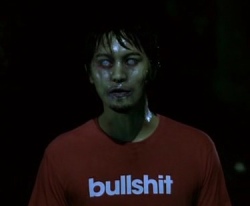 Next, a bullied youth takes revenge on his tormenters via that old black magic, followed by a campfire tale that name-drops a slew of scary movies as it pays homage to the more “spirited” ones. The campers experience real terror, but hey, at least they’re not made to “squeal like a pig.” Finally, a female flight attendant finds that transporting a corpse in an otherwise empty jet offers many an opportunity for tummy turbulence.
Next, a bullied youth takes revenge on his tormenters via that old black magic, followed by a campfire tale that name-drops a slew of scary movies as it pays homage to the more “spirited” ones. The campers experience real terror, but hey, at least they’re not made to “squeal like a pig.” Finally, a female flight attendant finds that transporting a corpse in an otherwise empty jet offers many an opportunity for tummy turbulence.
4bia is slick and sick, with each segment effective because it’s roughly a quarter of the length of the running time into which many Asian films overextend their thin plots. The movie hasn’t had an official U.S. release yet — you’d think Lionsgate would put it paws all over it — but if it did, I’d buy it. The anthology film is alive and well. You just have to cast your eyes overseas for it. —Rod Lott

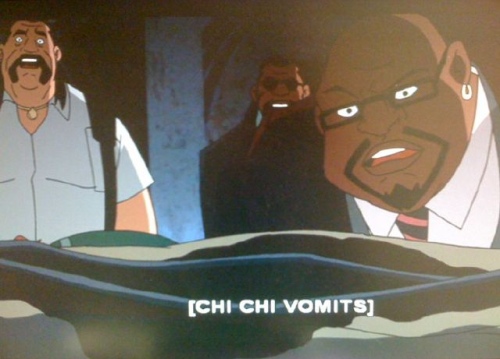

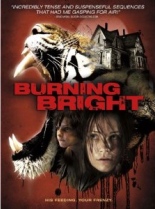
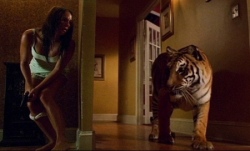 Johnny boards Kelly and Tom inside because of the oncoming storm and heads to the bar … but not before letting his new purchase slip inside, too. ZOMG KITTEH!!! Thus begins a half-literal game of cat-and-mouse that shouldn’t be able to sustain itself for more than an hour, yet does.
Johnny boards Kelly and Tom inside because of the oncoming storm and heads to the bar … but not before letting his new purchase slip inside, too. ZOMG KITTEH!!! Thus begins a half-literal game of cat-and-mouse that shouldn’t be able to sustain itself for more than an hour, yet does. 
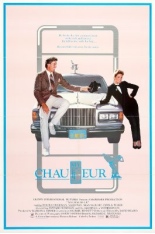
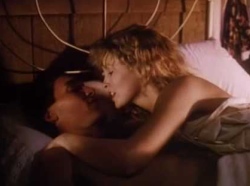 Just watch her wonderful under-reaction to the news that her and Sam Jones’ blossoming intimate relationship might be an incestuous one and tell me why she didn’t at least get her own badly written, cheesy ’80s sitcom! Truthfully, I can take or leave the rest of the picture — including the bizarre appearance by a fetal Penn & Teller — but that hasn’t stopped me from watching it a dozen times since it first came out.
Just watch her wonderful under-reaction to the news that her and Sam Jones’ blossoming intimate relationship might be an incestuous one and tell me why she didn’t at least get her own badly written, cheesy ’80s sitcom! Truthfully, I can take or leave the rest of the picture — including the bizarre appearance by a fetal Penn & Teller — but that hasn’t stopped me from watching it a dozen times since it first came out.
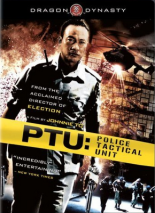
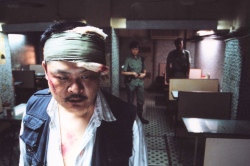 Soon, the gang’s leader, the aptly named Ponytail (Chi-Shing Chiu) is dead from a knife through the back, but not before he runs down the street and tries to drive himself to the hospital, while Lo slips into unconsciousness after an alleyway fall in pursuit, and the other gang guys steal his gun.
Soon, the gang’s leader, the aptly named Ponytail (Chi-Shing Chiu) is dead from a knife through the back, but not before he runs down the street and tries to drive himself to the hospital, while Lo slips into unconsciousness after an alleyway fall in pursuit, and the other gang guys steal his gun.